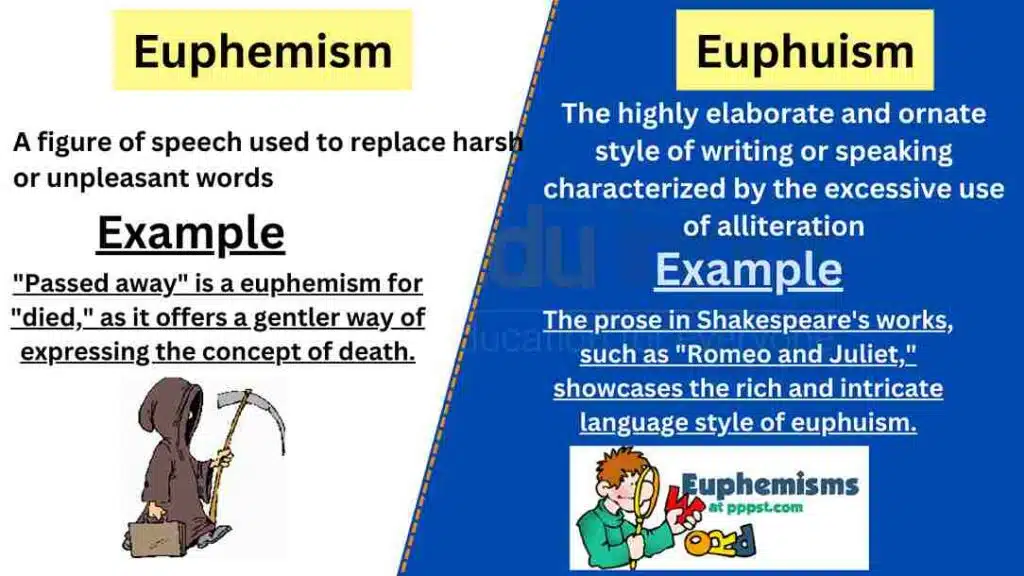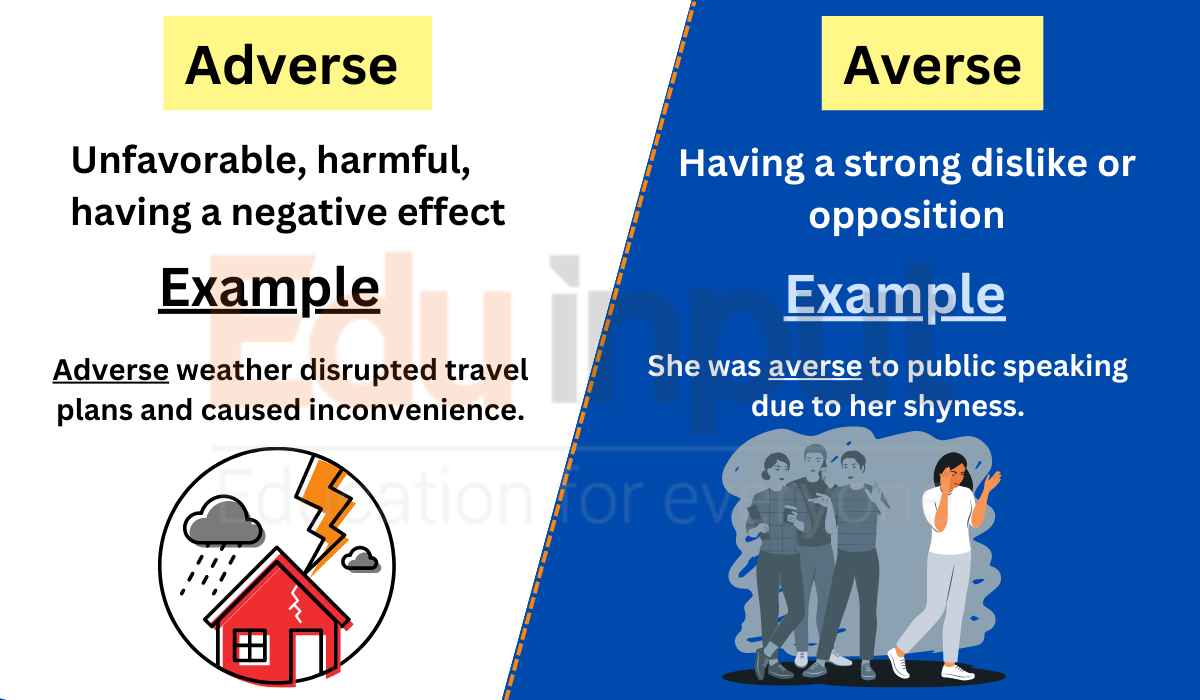Euphemism vs Euphuism-Difference Between and Examples
Discover the distinction between “euphemism” and “euphuism.” These terms might sound alike, but they have different meanings and purposes. Dive into this article to gain clear explanations, examples, and comparative analysis. By understanding these linguistic devices, you’ll improve your communication skills and appreciate the subtle beauty of language.

Meanings and Examples
Euphemism Meaning
Noun: A euphemism is a figure of speech used to replace harsh or unpleasant words or phrases with milder, more socially acceptable ones, often to mitigate offense, discomfort, or sensitivity.
Euphemism Examples
- “Passed away” is a euphemism for “died,” as it offers a gentler way of expressing the concept of death.
- In business, “downsizing” is frequently used as a euphemism for “layoffs” to soften the impact on employees.
- The phrase “visually impaired” serves as a euphemism for “blind,” emphasizing a more respectful and inclusive language choice.
Euphuism Meaning
Noun: The meaning of Euphuism refers to a highly elaborate and ornate style of writing or speaking characterized by the excessive use of alliteration, wordplay, and elaborate metaphors.
Euphuism Examples
- The prose in Shakespeare’s works, such as “Romeo and Juliet,” showcases the rich and intricate language style of euphuism.
- John Lyly’s novel “Euphues: The Anatomy of Wit” exemplifies the literary movement that popularized euphuism in Elizabethan England.
- Euphuism aims to captivate readers with its elegant and artful use of language, often featuring complex sentence structures and elaborate descriptions.
Difference Between Euphemism and Euphuism
| Euphemism | Euphuism | |
| Noun | Substitution of mild words for harsh ones | Elaborate and ornate language style |
| Example | “Passed away” for “died” | Shakespeare’s works, Lyly’s novel |
| Usage | Mitigate offense or discomfort | Ornate and highly stylized expression |
| Grammar | Noun | Noun |
Usage in a Paragraph
In literature, language often plays a vital role in conveying subtle messages and evoking emotional responses. Consider a scenario in which a writer aims to describe a character’s physical appearance. Employing euphemism, the writer may choose to say that the character has a “generously proportioned figure” instead of bluntly stating that they are overweight. This euphemistic approach avoids potential offense or discomfort. On the other hand, if the writer adopts euphuism, they might craft a sentence like “Her buxom form bedazzled all who beheld her, with the radiance of her curves casting a bewitching spell.” This sentence showcases the ornate and artful nature of euphuism, captivating the reader through its elaborate language and vivid imagery.
Understanding the distinctions between “euphemism” and “euphuism” empowers us to use these linguistic devices effectively and appreciate their unique contributions to language and communication. Euphemisms enable us to navigate sensitive topics with tact and respect, replacing harsh or uncomfortable words with milder alternatives. In contrast, euphuism immerses readers in an intricate and ornate literary style, using alliteration, wordplay, and metaphors to create a captivating experience. By embracing the nuances of these concepts, we can enrich our language skills, convey messages with precision, and engage with the diverse facets of written and spoken expression.






Leave a Reply